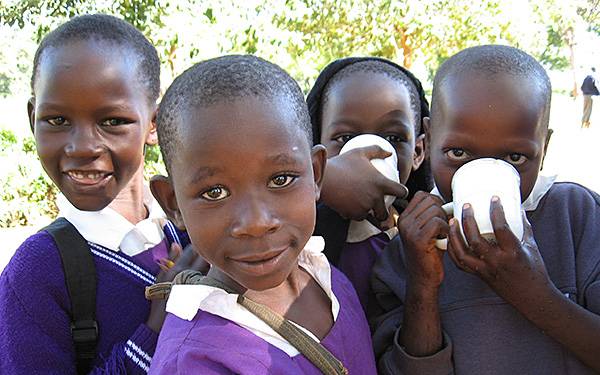You are here
Safe Water Protects Communities: World Water Day
Most of us go about each day with no concern over having access to the water we need. We use water to brew our coffee, hydrate our bodies, wash our clothes and clean our homes. However, one in 10 people around the world have no safe water supply close to home and spend countless hours trekking to distant sources while coping with the health impacts of using contaminated water. World Water Day, which is recognized on March 22 every year, focuses attention on the responsible use of water and access to safe water for everyone.
Water is one of our most important natural resources. But 780 million people around the world do not have access to a safe and sufficient supply of water and another 2.5 billion people lack proper hygiene education to help prevent illness and death from disease. Sadly, 88 percent of deaths due to diarrheal illness worldwide are attributable to unsafe water, inadequate sanitation and poor hygiene. These diarrheal diseases (such as cholera) kill more children than AIDS, malaria and measles combined, making diarrheal disease the second leading cause of death among children under five.
The U.S. Centers for Disease Control and Prevention (CDC) is committed to increasing access to clean and sufficient water supplies as well as sanitation, especially in underdeveloped countries with limited resources. And, importantly, the CDC Foundation provides essential support for CDC’s programs to improve water, sanitation and hygiene (WASH). This work is critical because global access to safe water, adequate sanitation and proper hygiene education can reduce illness and death from disease.
Did you know that more than 35 countries have treated 148 billion liters of water using CDC’s Safe Water System programs?
One way to reduce deaths is ensuring health care facilities have access to safe water, improved sanitation and hygiene infrastructure. Globally, 38 percent of health care facilities do not have access to improved or clean water, 19 percent do not have improved sanitation and 35 percent do not have water and soap for handwashing, with the burden falling disproportionately on health care facilities in the developing world. This greatly increases the risk of health care-associated infections, which are estimated to be up to five times higher in developing countries than in developed countries and affect as many as 46 percent of patients.
One way the CDC Foundation assists CDC in addressing global WASH issues around the globe is through improving infrastructure in health care facilities. The approach to achieving safe water includes advancing proven and promising solutions such as WASH stations in health care facilities, strengthening water governance and in-country systems and working with local ministries, governments and partners to encourage adoption of WASH policies.
Another important program is CDC’s Safe Water System. During his tenure at CDC, Dr. Eugene Gangarosa and his CDC colleagues developed the Safe Water System, which protects communities from contaminated water by promoting behavior change and providing affordable and sustainable solutions. The Safe Water System increases access to safe water by helping individuals treat and safely store water in homes, health facilities and schools.
The Gangarosa Endowment for Safe Water at the CDC Foundation, established by Dr. Gangarosa and his wife Rose, continues a lifelong commitment to provide safe water. Gifts to the endowment have supported the implementation of the Safe Water Systems in multiples countries and other water initiatives around the world.
Through your support of the CDC Foundation, you help accelerate and expand important safe water initiatives to provide clean, safe water and sanitation. Celebrate World Water Day today (and every day) by giving to the CDC Foundation. Together our impact is greater.
Learn more about CDC's safe water work at www.cdc.gov/safewater.

